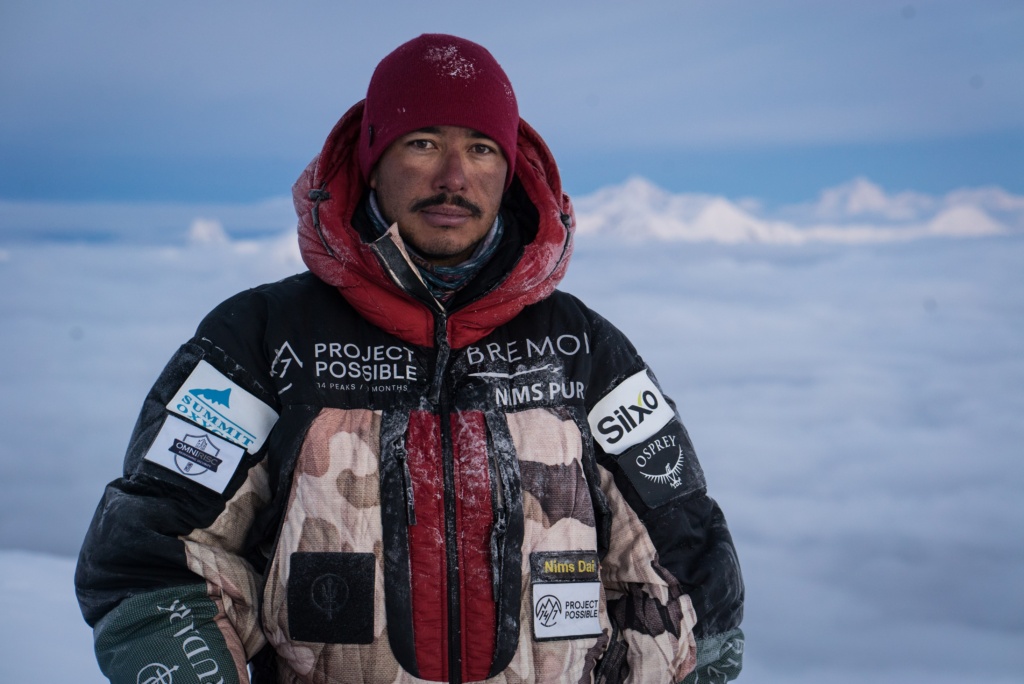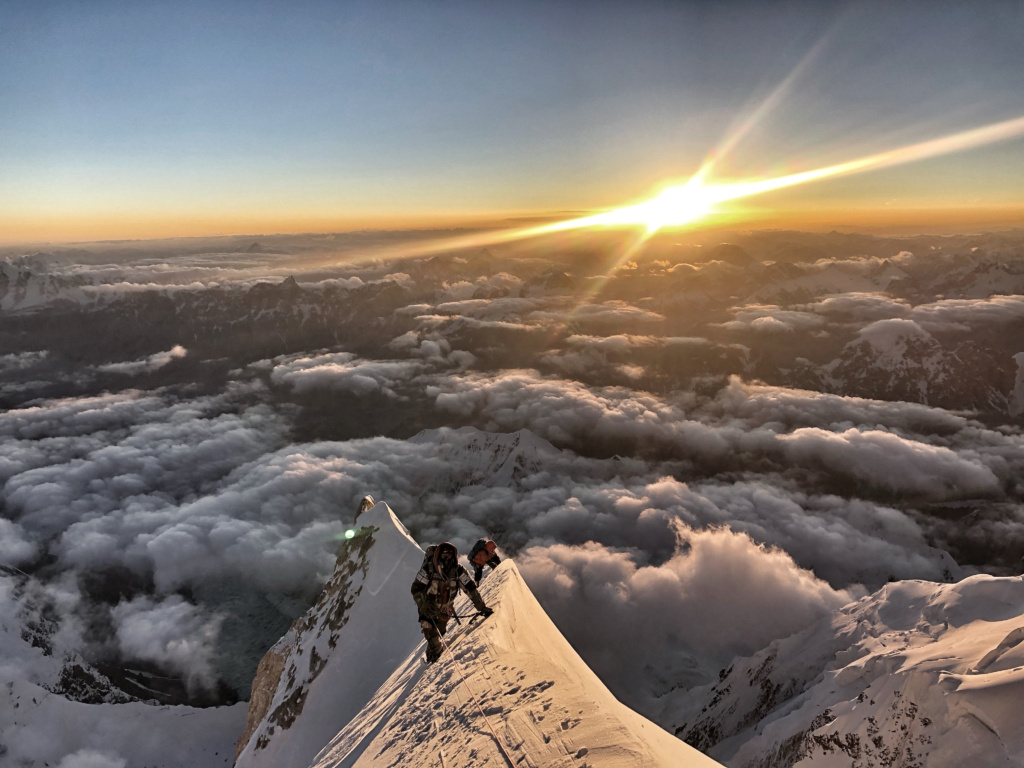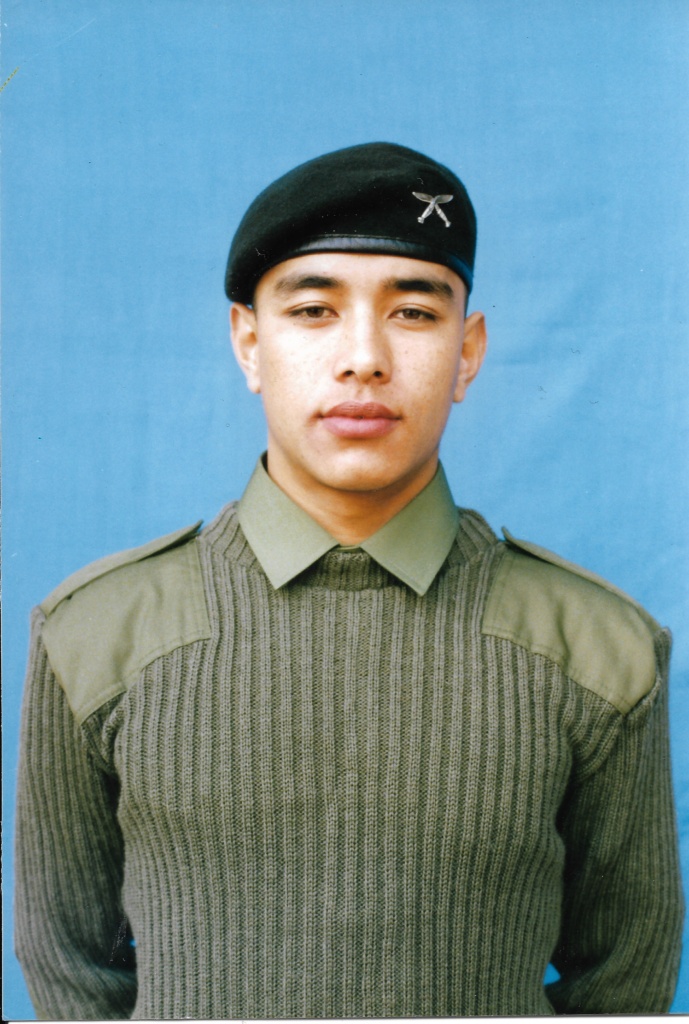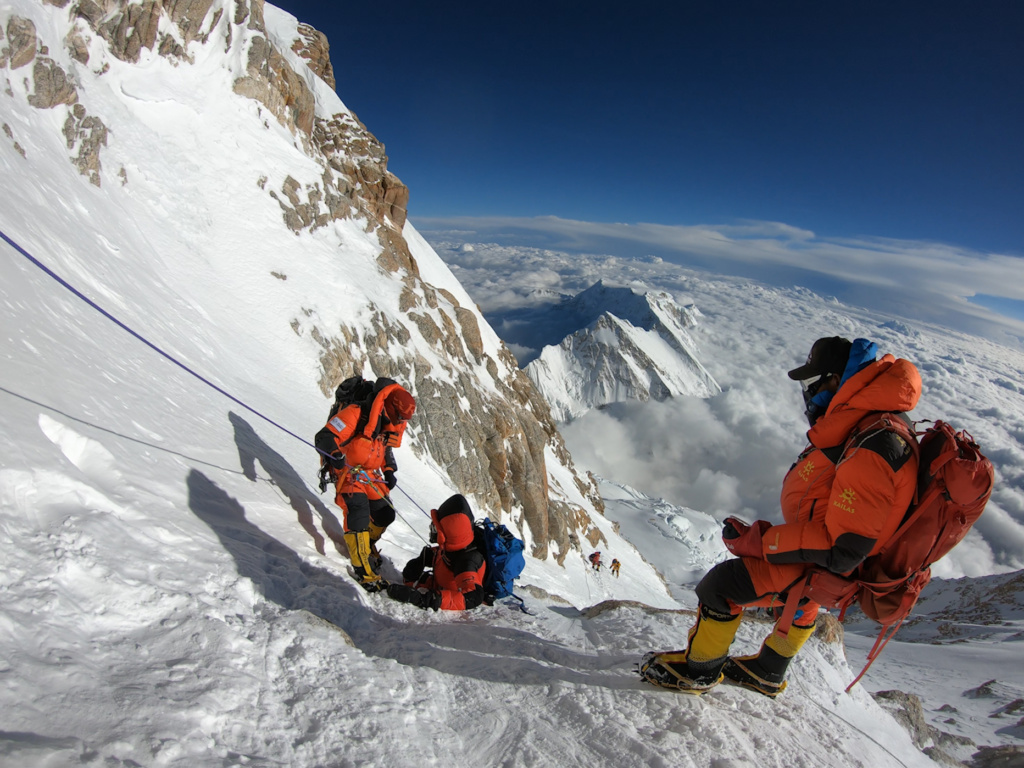The Nepali mountaineer pulled off an incredible feat in mountaineering by climbing all fourteen 8,000ers in just six months six days.

All images from Beyond Possible by Nimsdai Purja,
published by Hodder & Stoughton/Hachette India.
First published: https://lifestyle.livemint.com/news/big-story/the-man-who-climbed-the-world-s-14-tallest-mountains-in-six-months-111609161813042.html
The man who climbed the world’s 14 tallest mountains in six months
Nims Purja made history last year by climbing all 14 8000ers in the world in little over six months. How did he achieve this feat and what drove him?
Mountaineering and exploration have its roots in expeditions that feature a large team, multiple camps and many lengths of fixed rope en route the summit. With time, a few adapted to lightweight, alpine-style climbs with small teams and minimal gear. These days, Nirmaldai ‘Nims’ Purja has redefined the way these big mountains are climbed, a cocky approach for some that can best be described as heavy-metal climbing.
There are reasons why this new kid on the block made the world sit up and take notice of his abilities last year. On average, most climbers dedicate many weeks at the base of a mountain in the hope of making the summit once they’ve acclimatised to the altitude and if the weather holds. The next few months are spent recovering from the demanding climb, before getting back to raising funds and readying the body for the next mountain. Of the handful who have made it to the top of all the 14 8,000-metre mountains of the world, Kim Chang-ho was the quickest to do so in seven years, 10 months and six days.
Purja, on the other hand, toyed with a manic idea, christened Bremont Project Possible, that first had the mountaineering community chuckling at the absurdity of it all. By the end of it though, he had silenced a majority of the detractors and earned fans along the way. He started out with his first 8,000er, Annapurna, on 23 April last year, and by 29 October, had made it to the top of Shishapangma, pulling off all 14 climbs in a matter of just six months, six days. It’s a defining moment in mountaineering history that he captures in his book, Beyond Possible.

“I was never chasing a record. I was trying to send out a message that if you put your heart, mind and soul into it, you can achieve the impossible. Through my attempt, I also wanted to highlight the ability of Nepalese mountaineers that often goes unrecognised, and raise awareness about climate change and global warming,” Purja says.
“This project shows just how you can beat the odds—from nobody believing in you, the funding not coming through, to the political dynamics and my mother’s ill health. It gives people hope,” the 37-year-old adds.
Though relatively young to the sport, Purja had done his fair share of mountaineering since 2012. But while leading another life as a Gurkha soldier, followed by a stint with the Special Boat Service—he says he is the first Nepalese to make the cut in the elite force’s history—his climbs were usually under wraps, including a bold rescue on Everest during the spring of 2016. The following year, he helped a Gurkha team to the top of Everest and realised he was up for the challenge.

“I led the rope-fixing team, opened the route and reached the top. I celebrated with the team in Kathmandu and then returned to climb Everest, Lhotse and Makalu in just five days that included two nights of partying. At this point I knew that I had something more to give the mountaineering world,” Purja says.
“What I took away from my military career was to be able to perform at the same level in a very stressful environment. It’s the same on the mountain, whether you have a struggling teammate, bad weather or logistical challenges. You have to make the right decision each time,” he says.
When the job posed questions that put the project in jeopardy, he decided to quit, give up on the pension and even sell his house to raise funds. Instead of dedicating hours to training prior to the start, he spent close to a year collecting money from any avenue that opened up to him. The odds were stacked up, but where Purja struck gold was in building a team of elite Nepalese climbers, who were as hungry for success as he was.
“I was putting some of my team members on a mountain that they had never climbed before. So not only did they have the opportunity to explore this new terrain and get paid for it, but it would also set them up for future projects with clients who wanted to be led on the same routes. I was the leader, yet there was something in it for everybody,” Purja says.
As the critics readied for the show with their mirth and sarcasm, the team geared up for the first of the 14 climbs. On Annapurna, a deadly mountain with a reputation of “killing 38 per cent of mountaineers brave enough to attempt it”, they survived an avalanche, reached the summit via a lesser climbed route and even put their future plans on hold to pull off the rescue of a stranded climber. The latter was a recurring theme on some of the other mountains as well.

Purja believes that it is a result of his grooming as a soldier and his use of supplemental oxygen higher up on the mountain, which has drawn repeated criticism from the purists. However, ever since his air supply helped rescue the climber on Everest, he swore that he wouldn’t climb without it to be able to extract anybody from an untoward situation in the harsh environment.
“Nothing is more important than human life. In the forces, if I left someone behind knowing that he could be saved, I don’t think I would ever be able to forgive myself. So, despite all that was at stake, I still did it for my peace of mind,” he says.
In just 31 days that spring, Purja knocked off a record six 8,000ers in Nepal and set another new benchmark in July after climbing all the five 8,000ers in Pakistan in just 23 days. Demanding puzzles like Kangchenjunga and Broad Peak were successfully solved in a single push, which is quite unheard of in the world of high altitude climbing. And while most struggled on K2 that season, Purja and his team carved a path right to the summit.
In the Death Zone at over 8,000 metres, where most others slow down, Purja found his playground. The climbs in the past had helped him understand his physiology and he adapted his body to not only survive the harsh conditions, but also bring out the best in him.
The recovery period in between was as unique as the climbs, a party unfolding most times at the tranquil base camps, with Nepalese pop in the air and generous rounds of booze flowing around the tent. Hangovers or otherwise, the following morning, it was back to business.
“I think we need to get some doctor or top scientist to study my body, just to ensure I’m not superhuman,” Purja says, chuckling. “I’ve had mates from the special forces who’ve told me—wow, Nims, I don’t know how you do it. When I climbed Everest, I didn’t recover for two months.”
A quick dash to Cho Oyu before returning to finish the Manaslu climb in September left Shishapangma as the last remaining objective. While permission was denied initially by the Chinese authorities, Purja used his connections to find a way through it as well. By the end of it, a project that was initially estimated to take seven months had been signed off in six months and six days.
“I know I’m a revolutionary, I’m different. I tend to take high risks, but that’s because I am able to imagine that something like this can be done. And to actually prove that it can be done is a really humbling experience,” Purja says.
At the border, he was picked up by his mother, who had been unsure of the project at first. The team received a raucous reception at the airport and the smile on her face had Purja realise that it had been worth the effort. “There were more people there than when David Beckham came to Kathmandu,” Purja says, laughing.
Life has changed in many ways for him since pulling off Bremont Project Possible. Of the last greatest challenges on the big mountains is a winter climb of K2. Rest assured, Purja will be there in the weeks ahead, going for glory in his own heavy metal style.